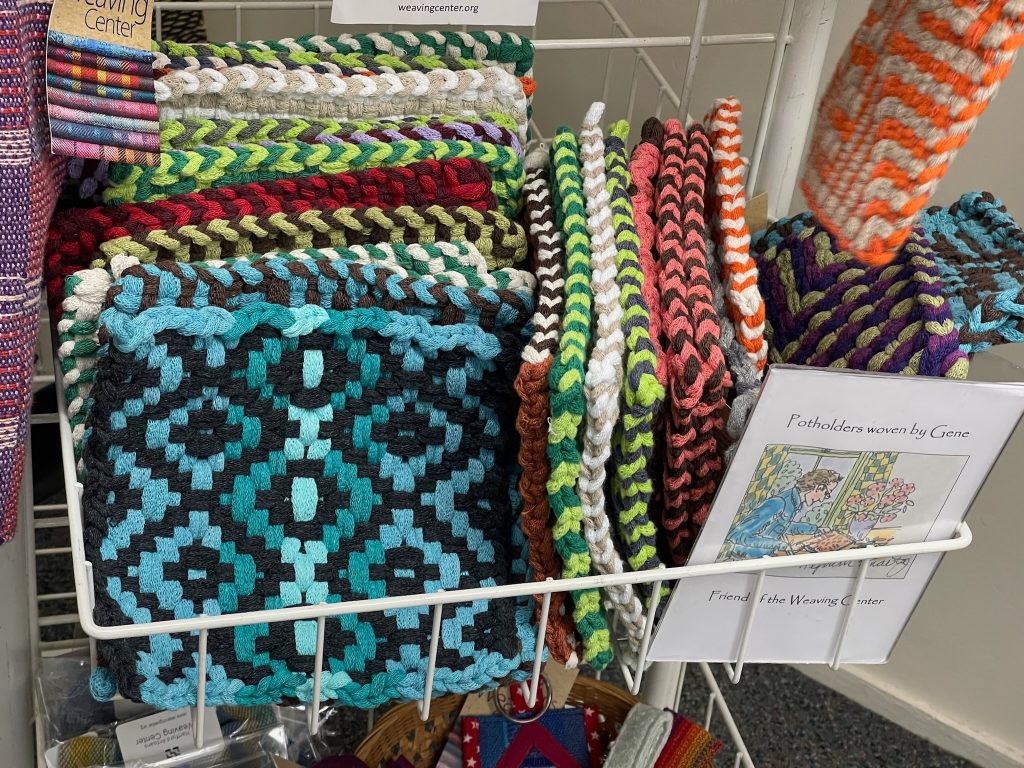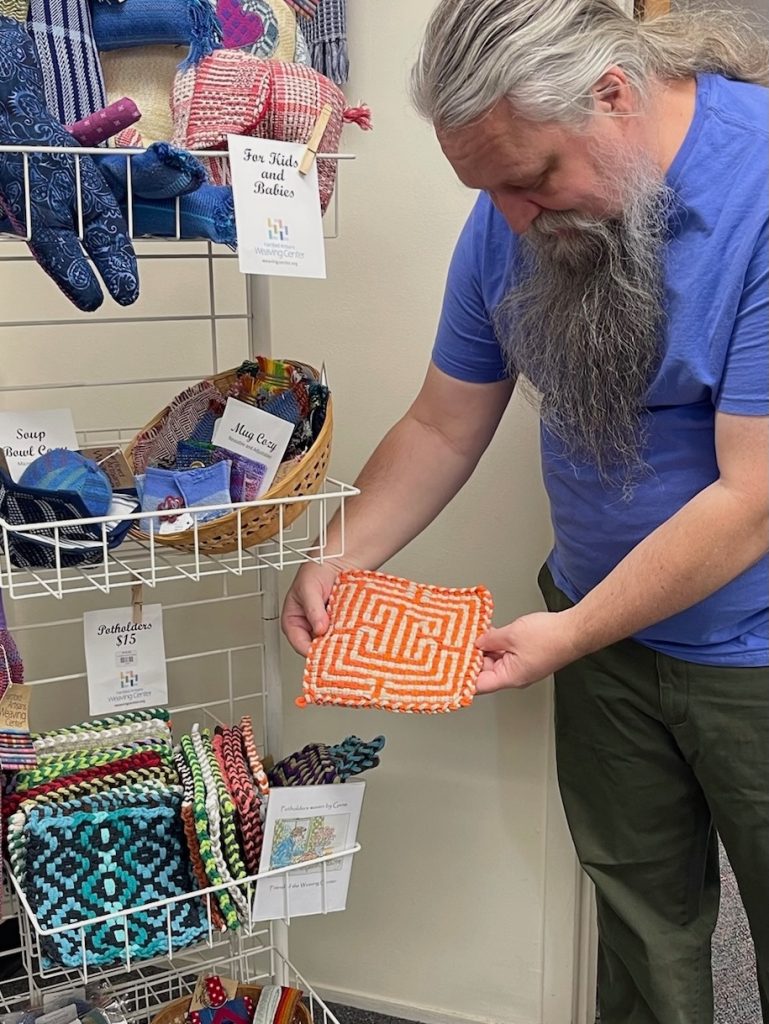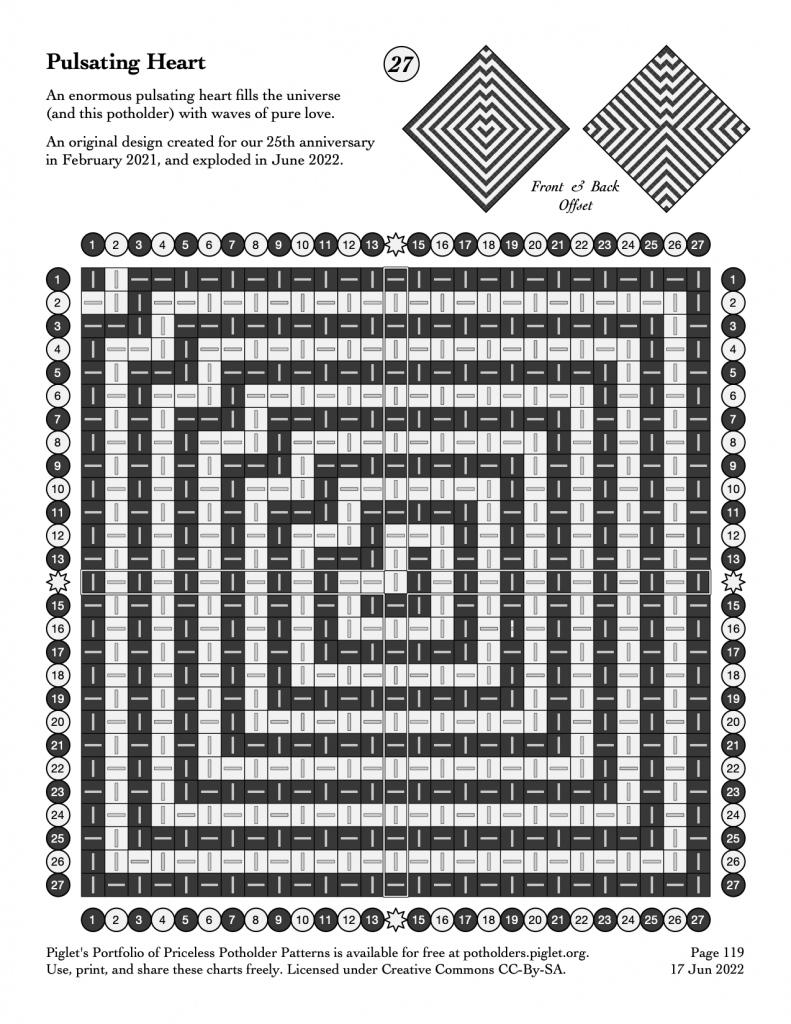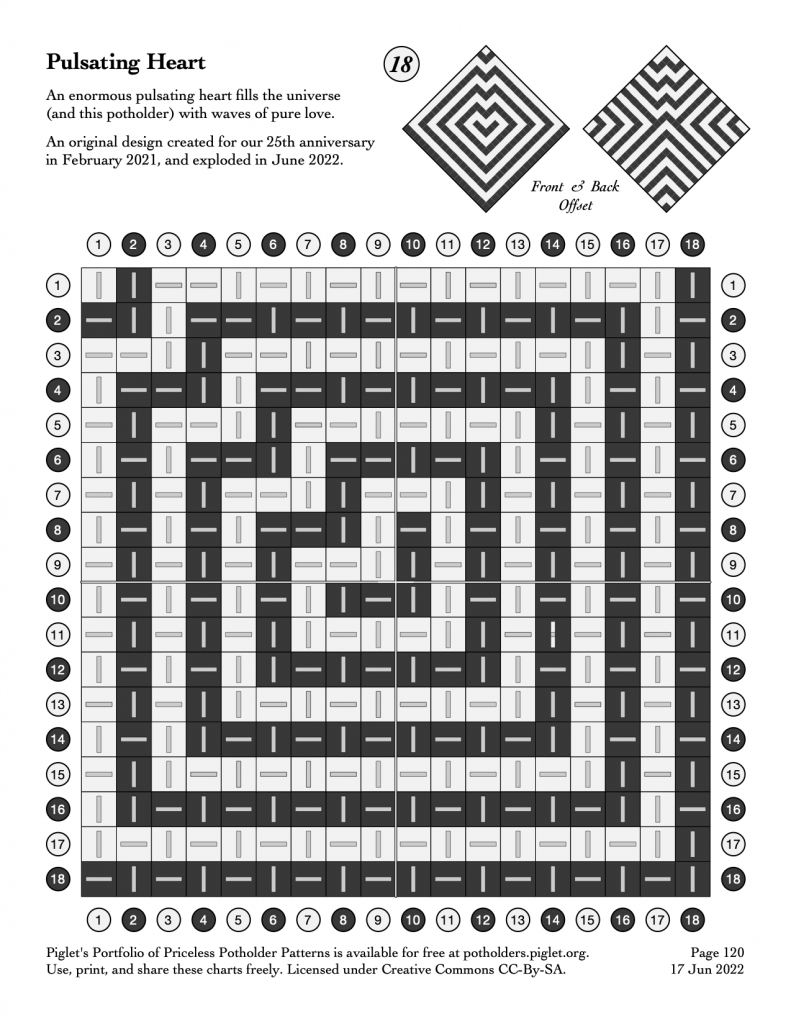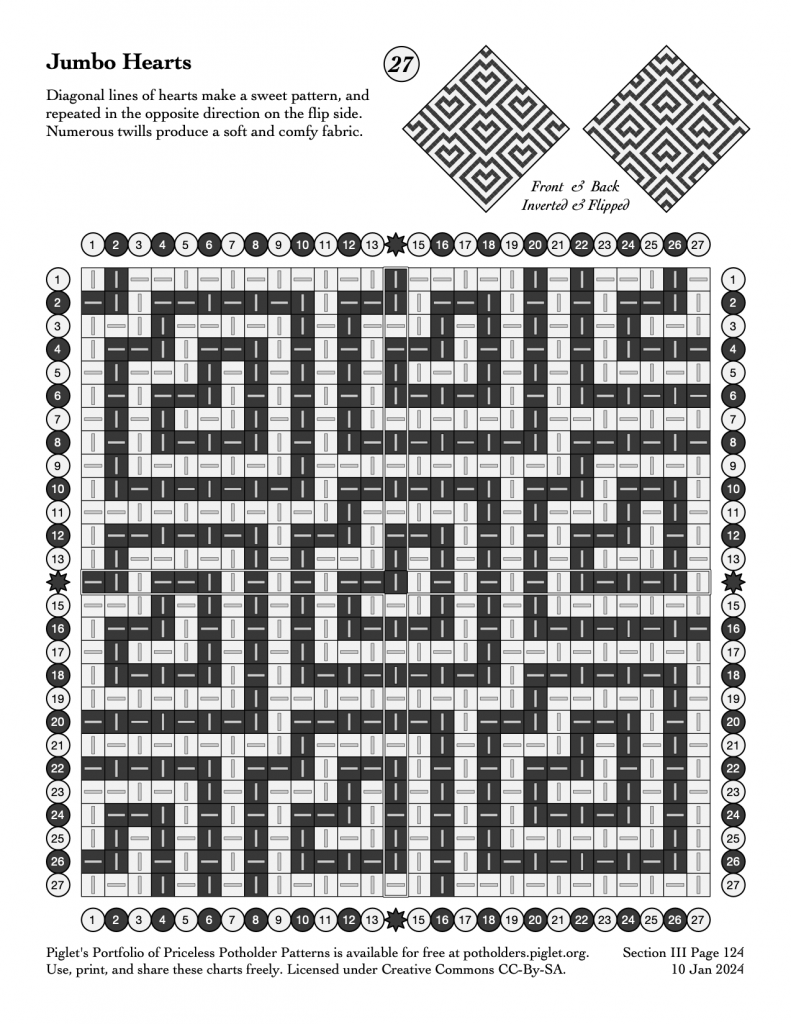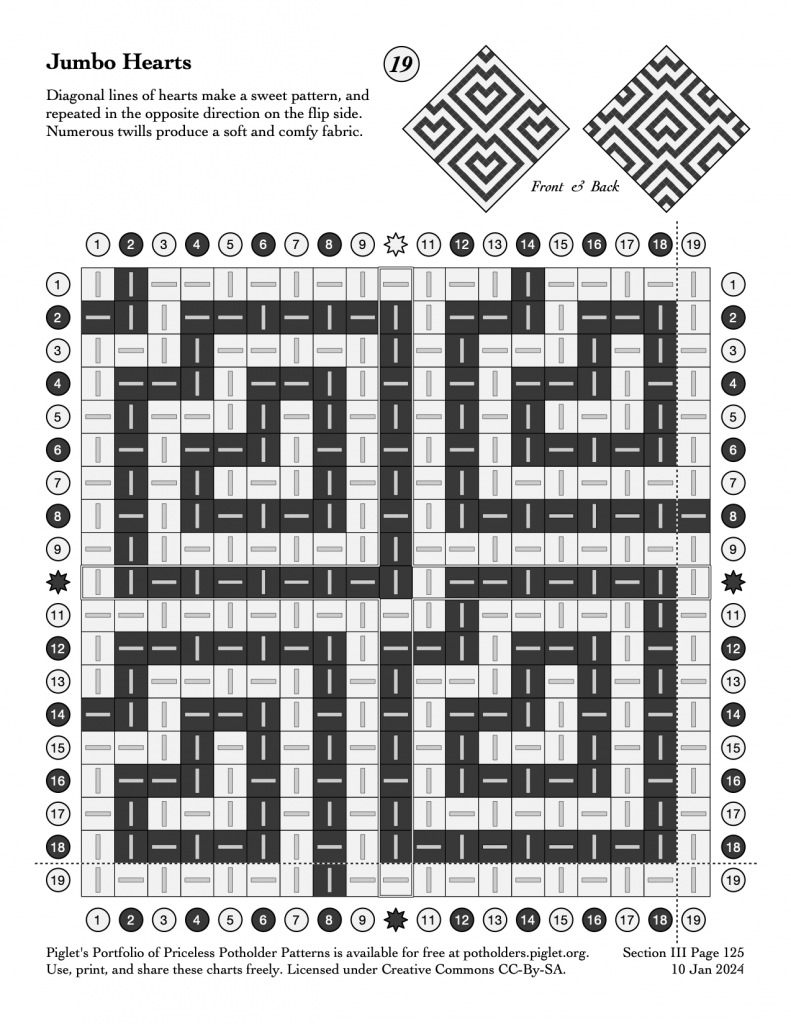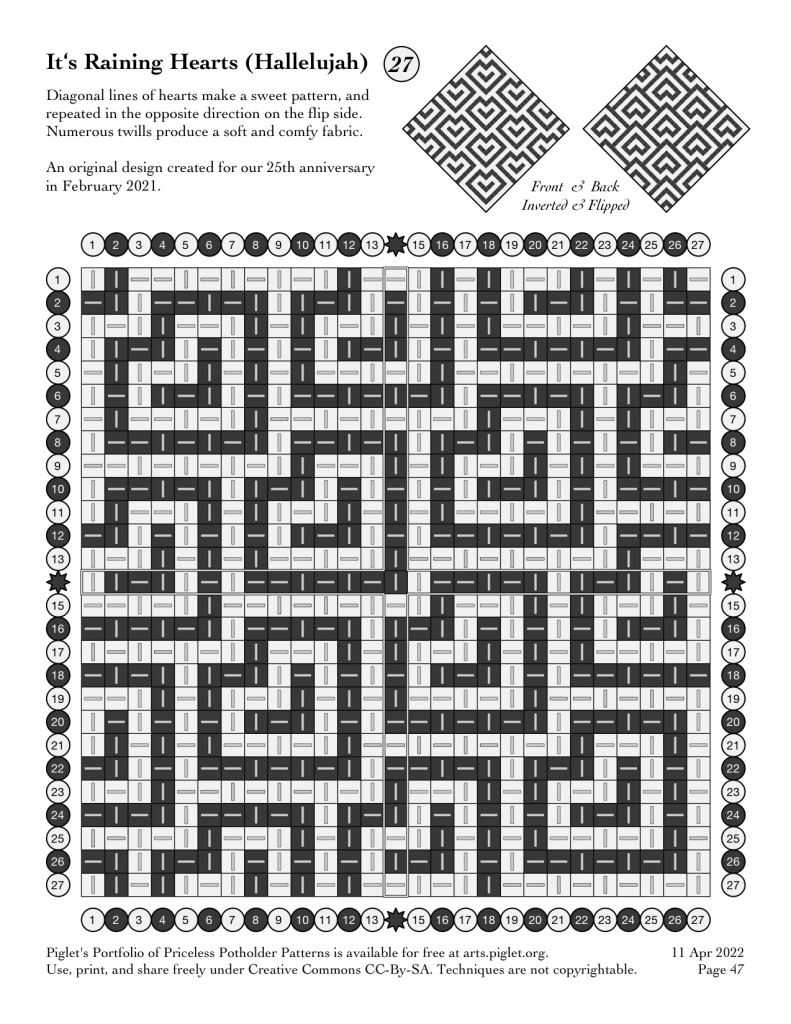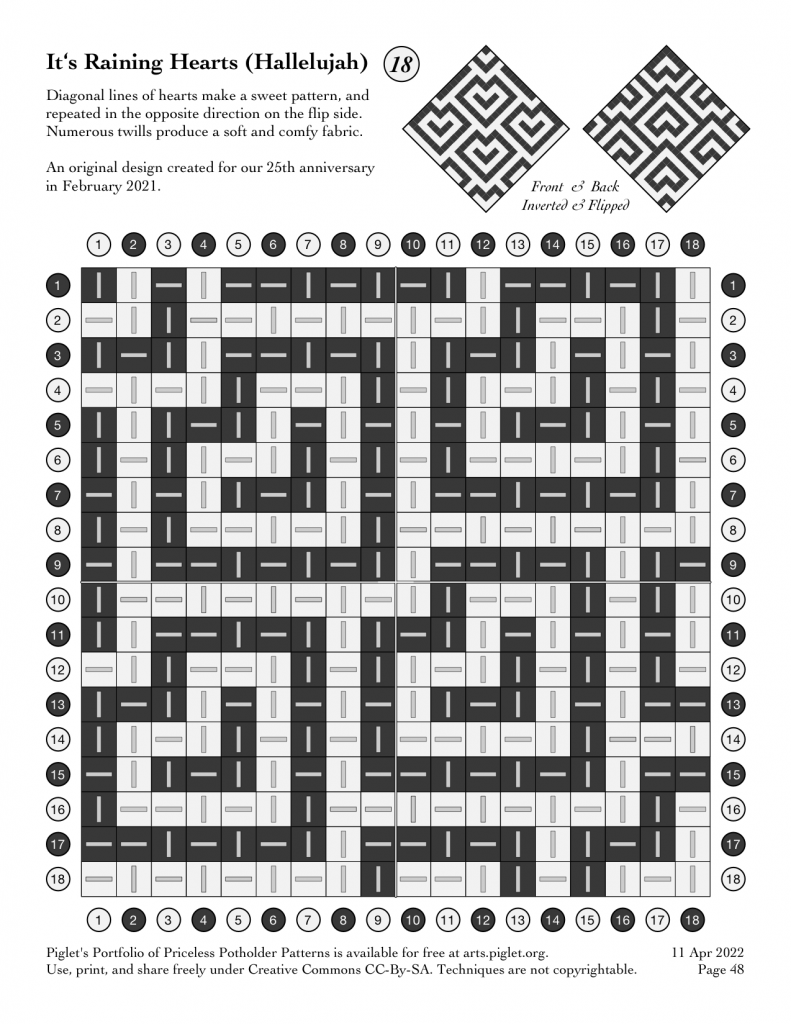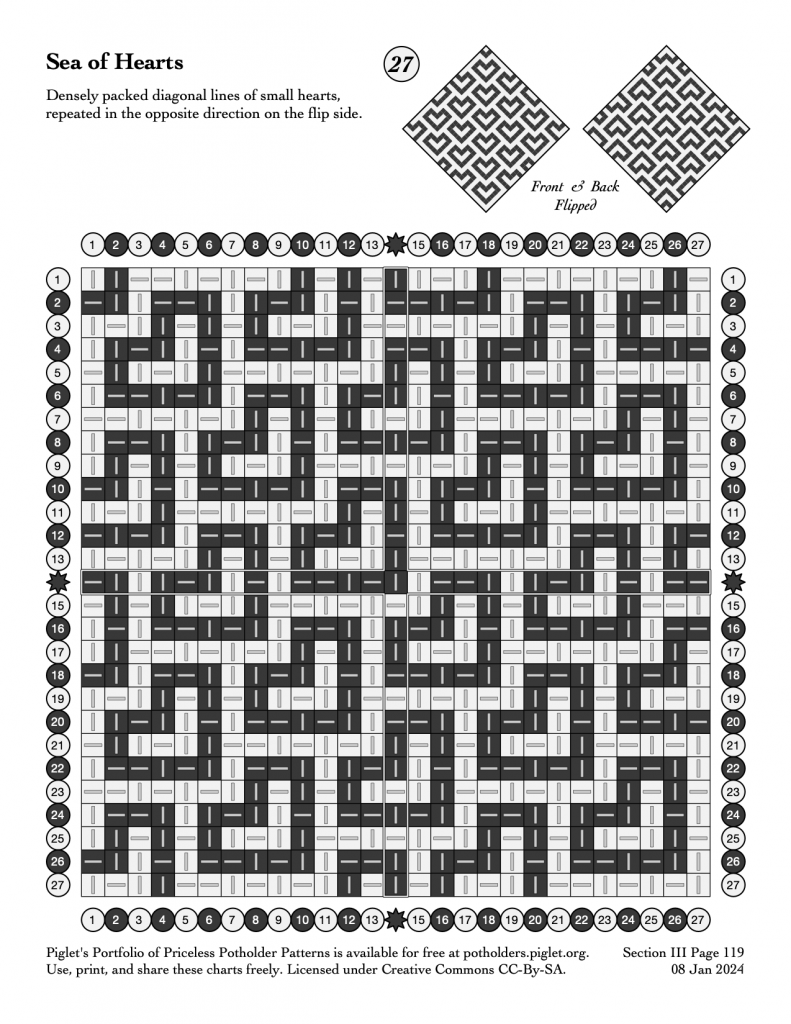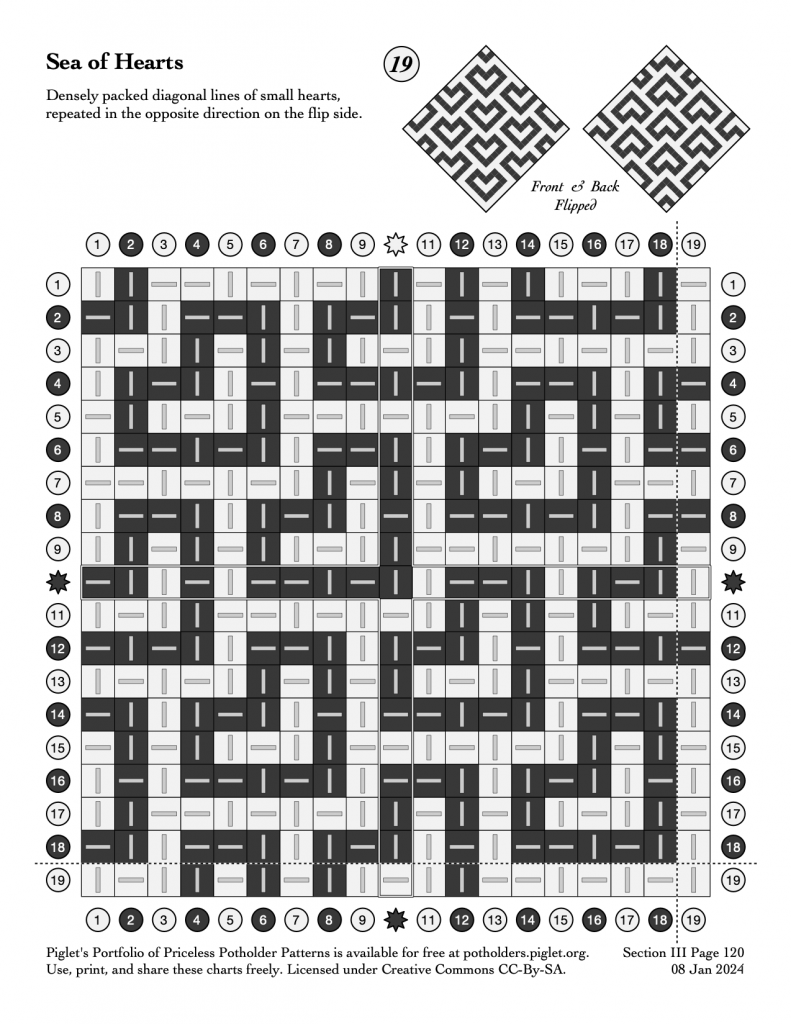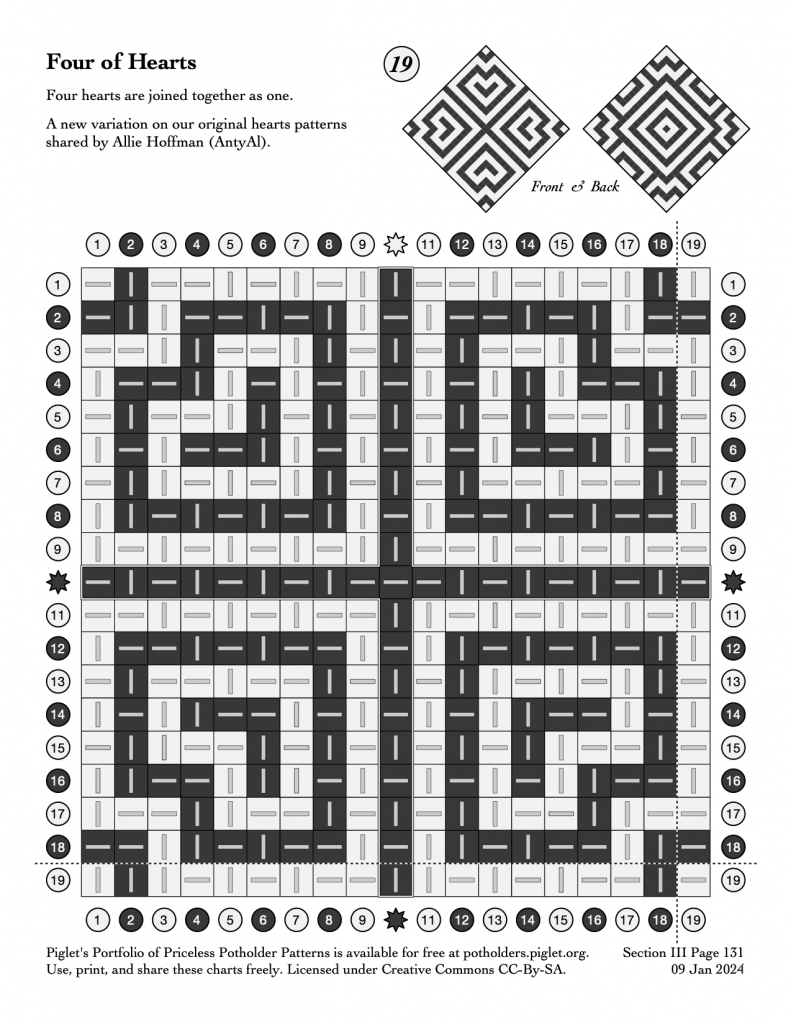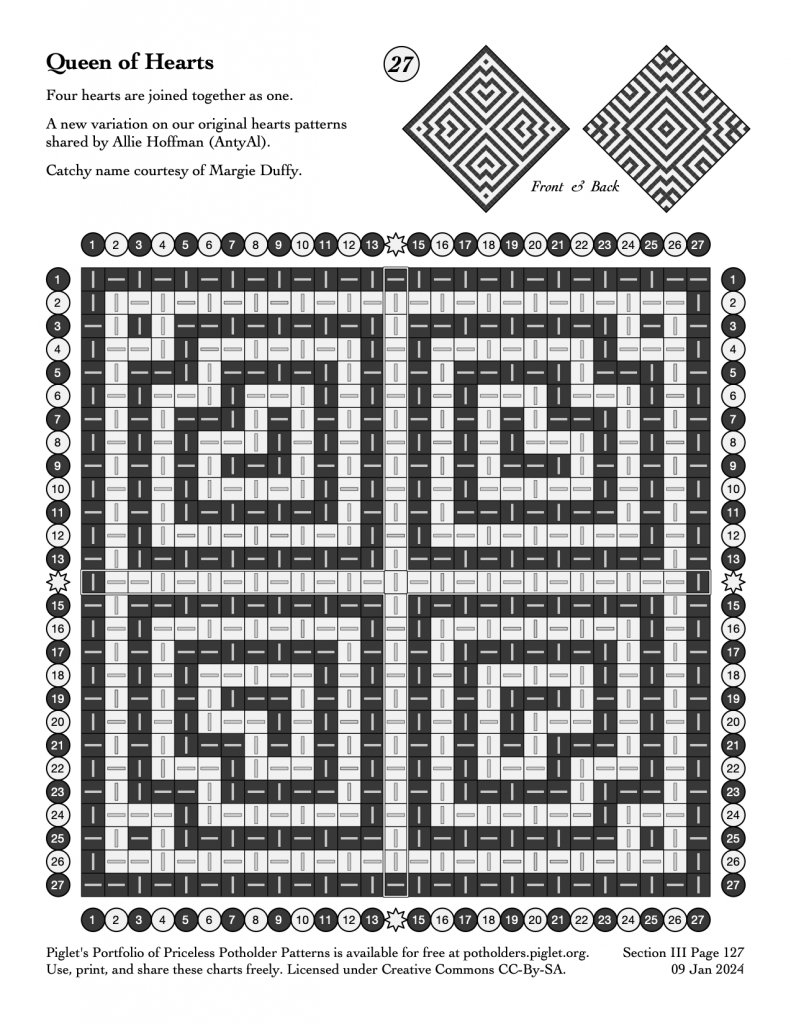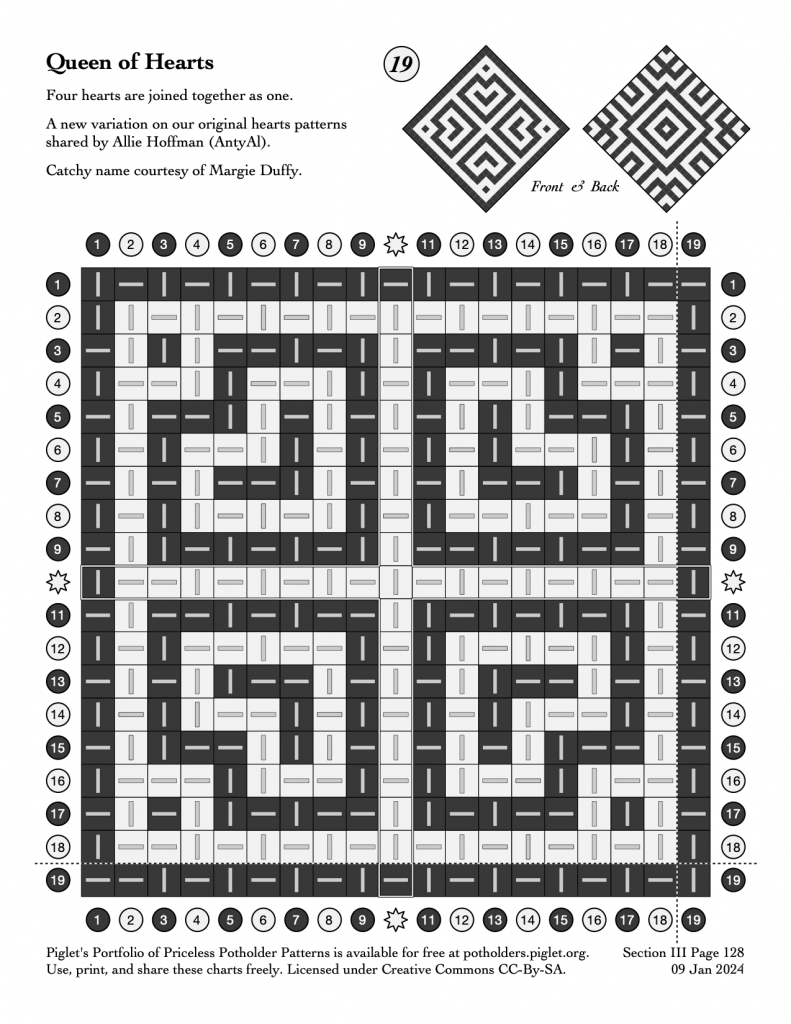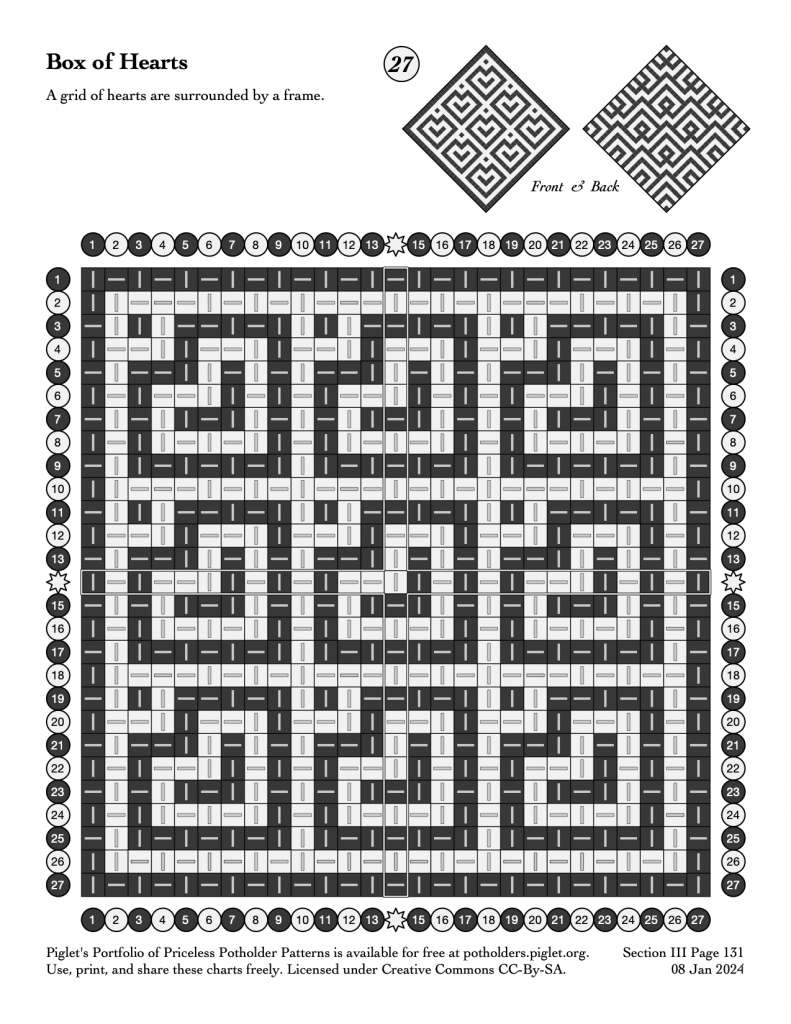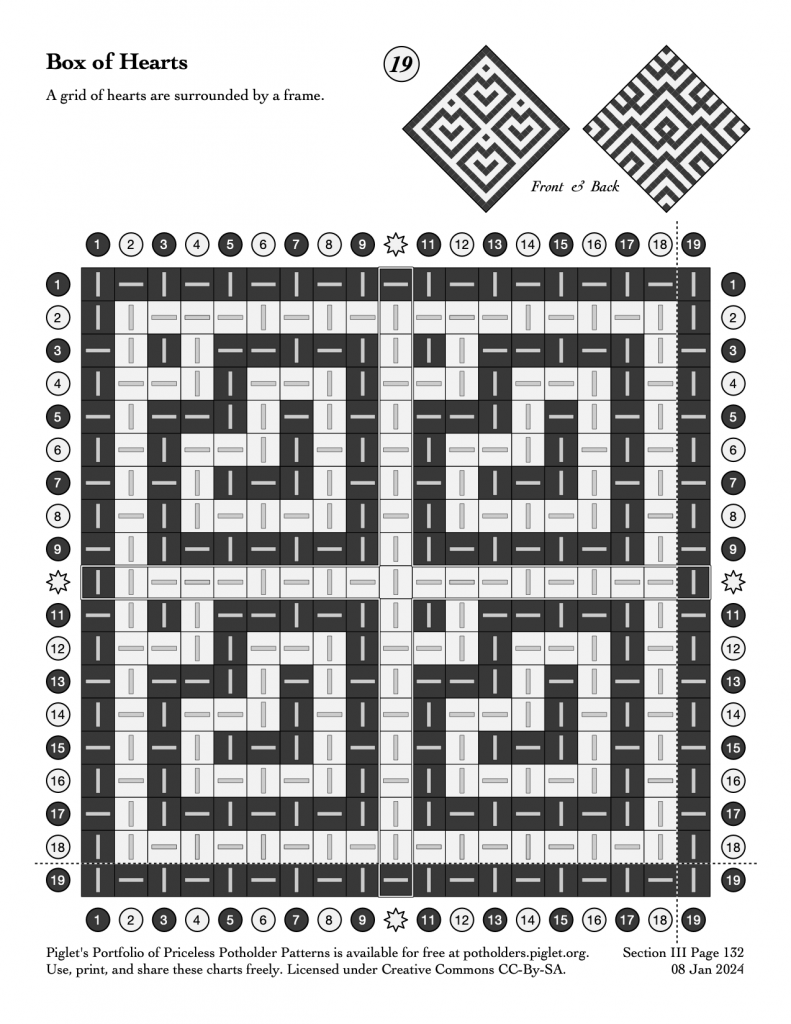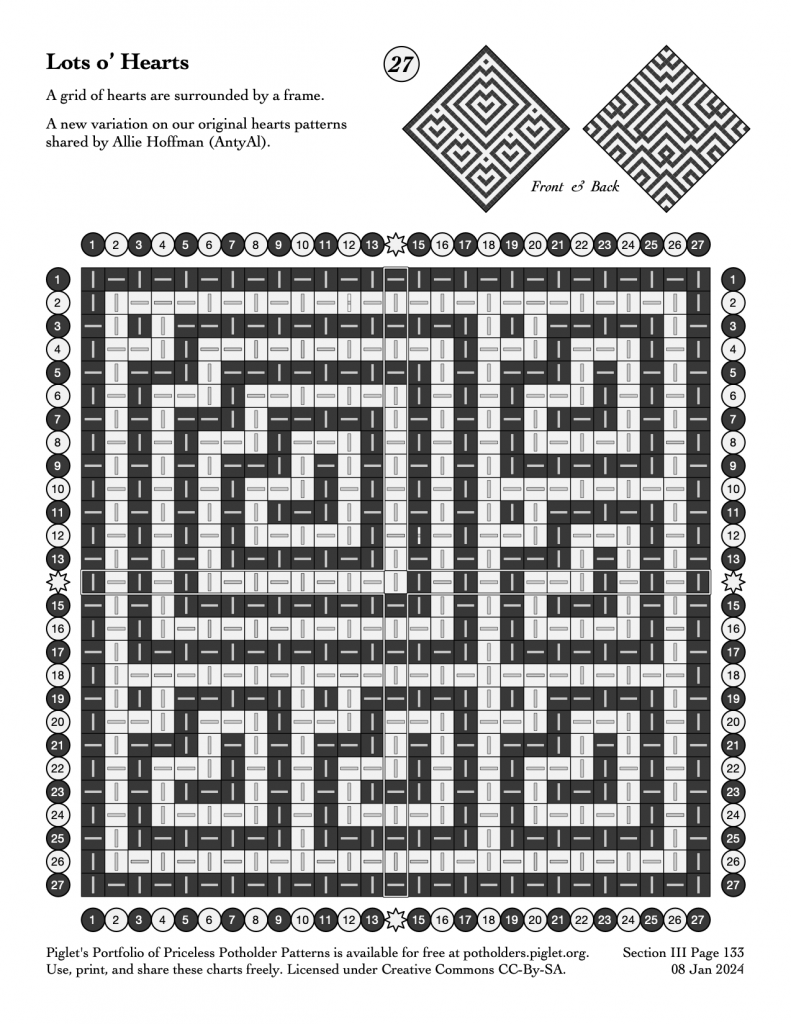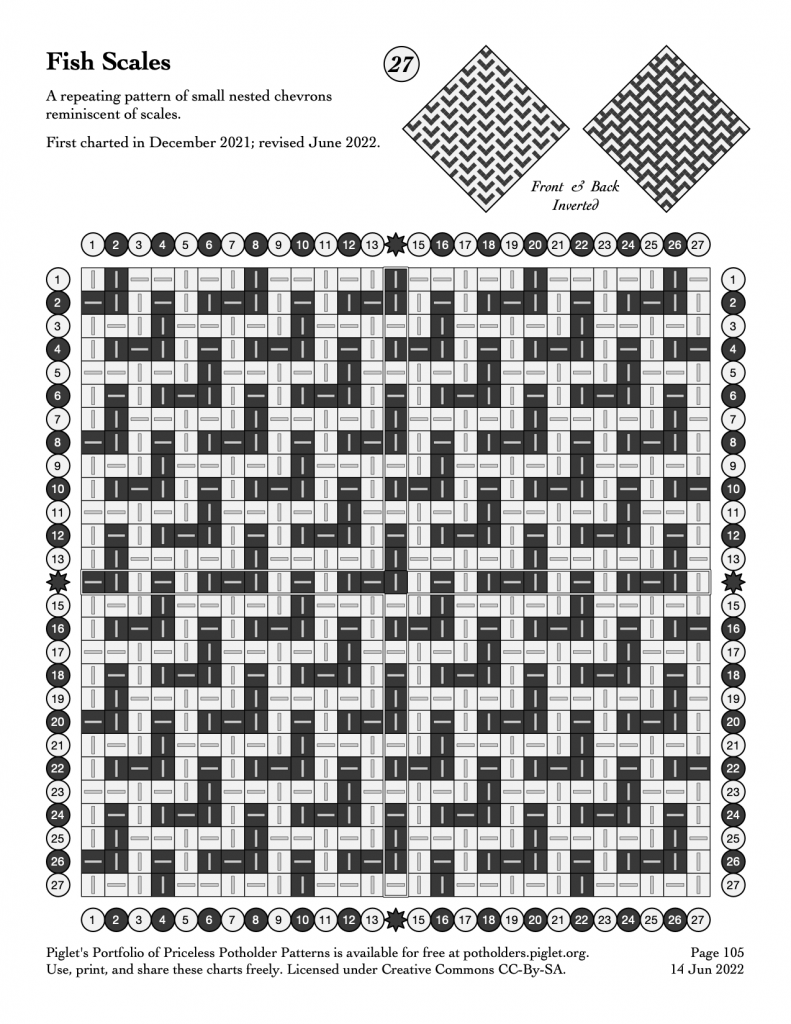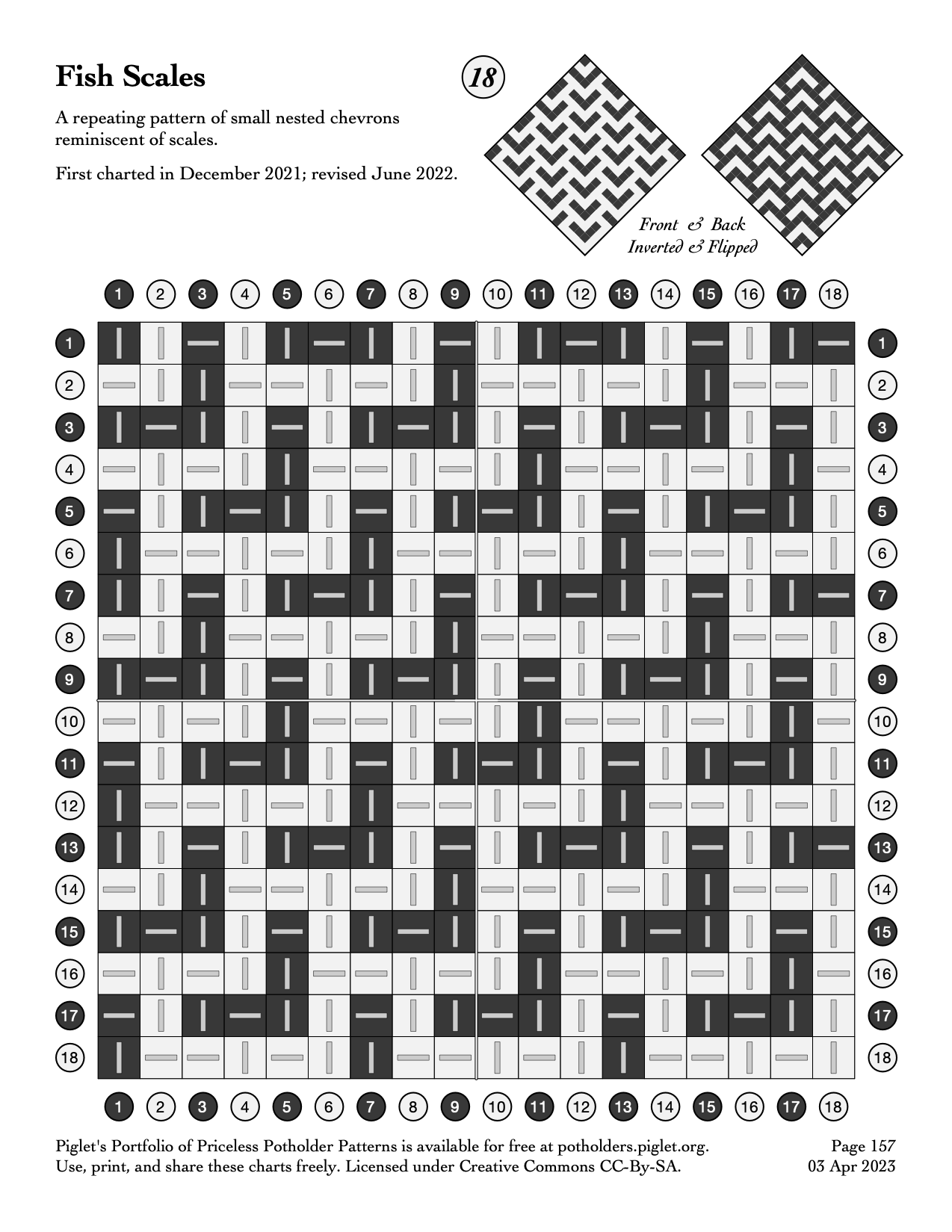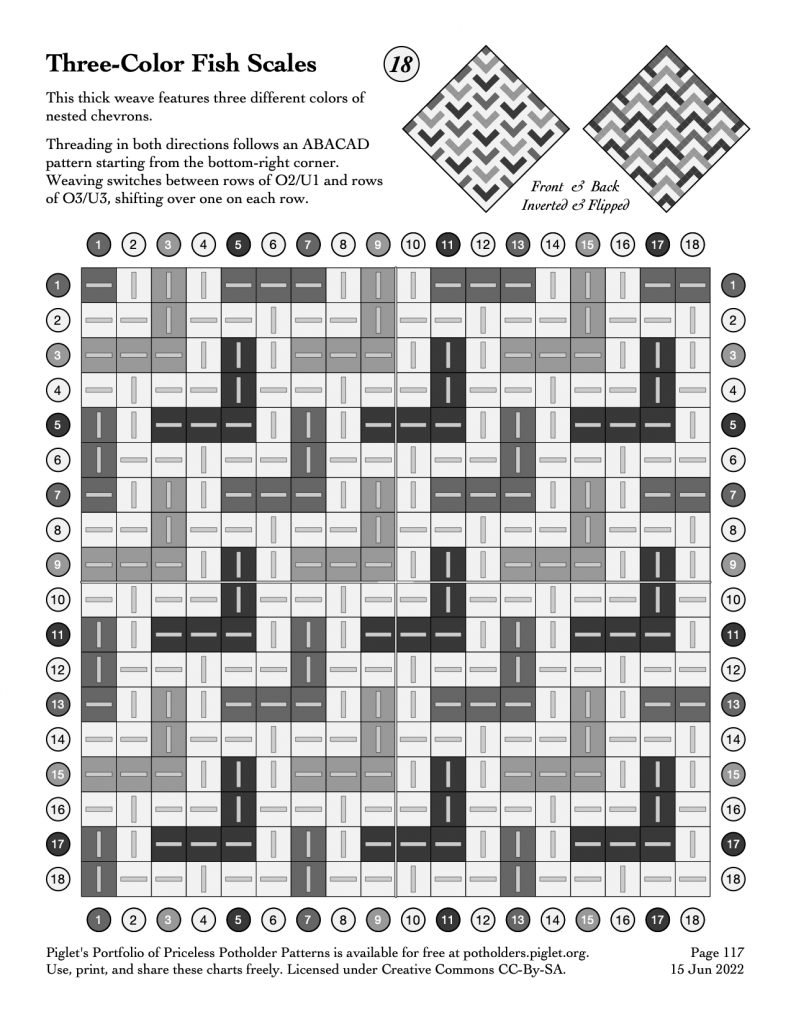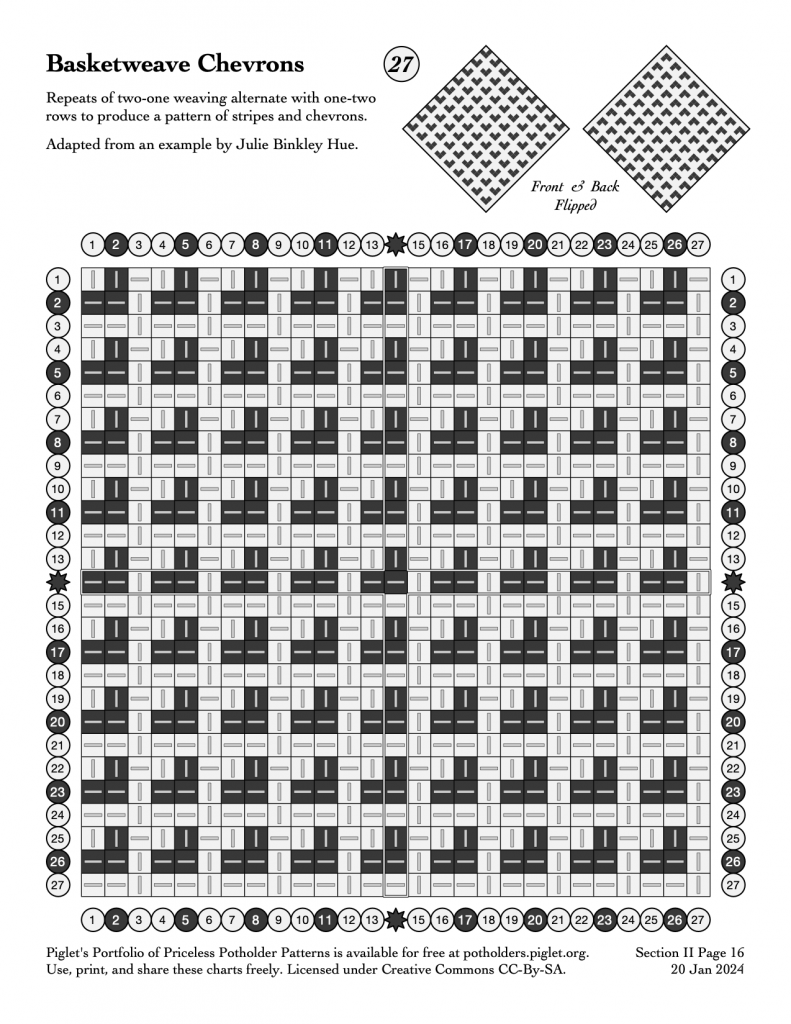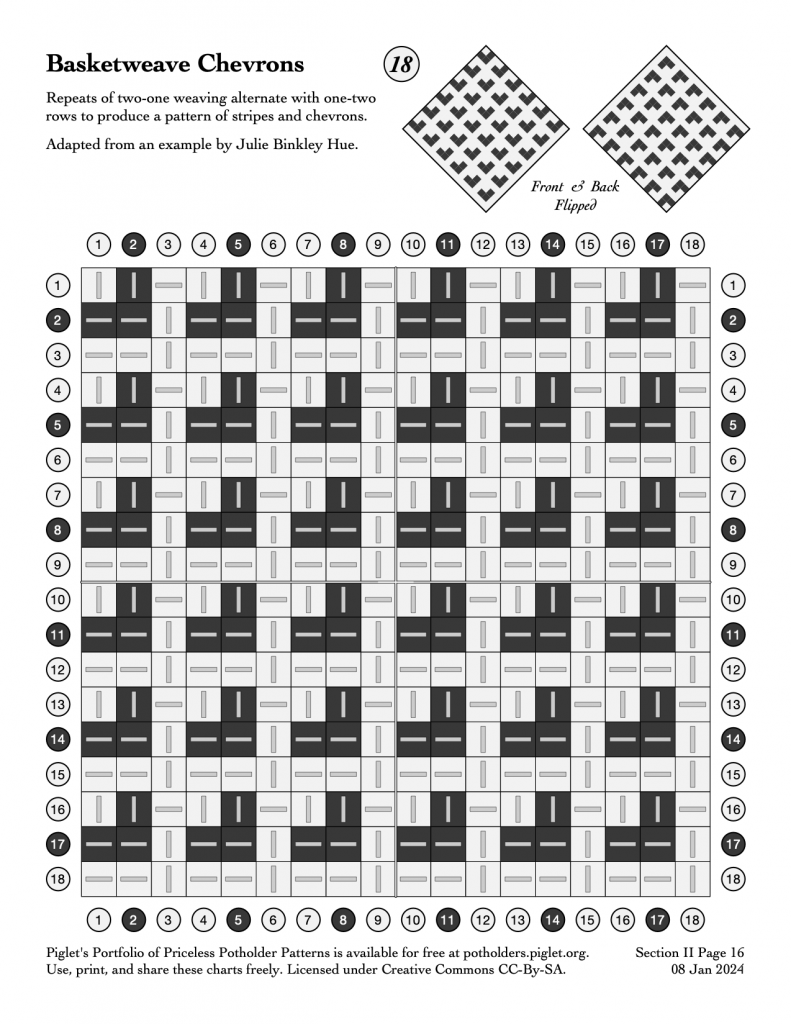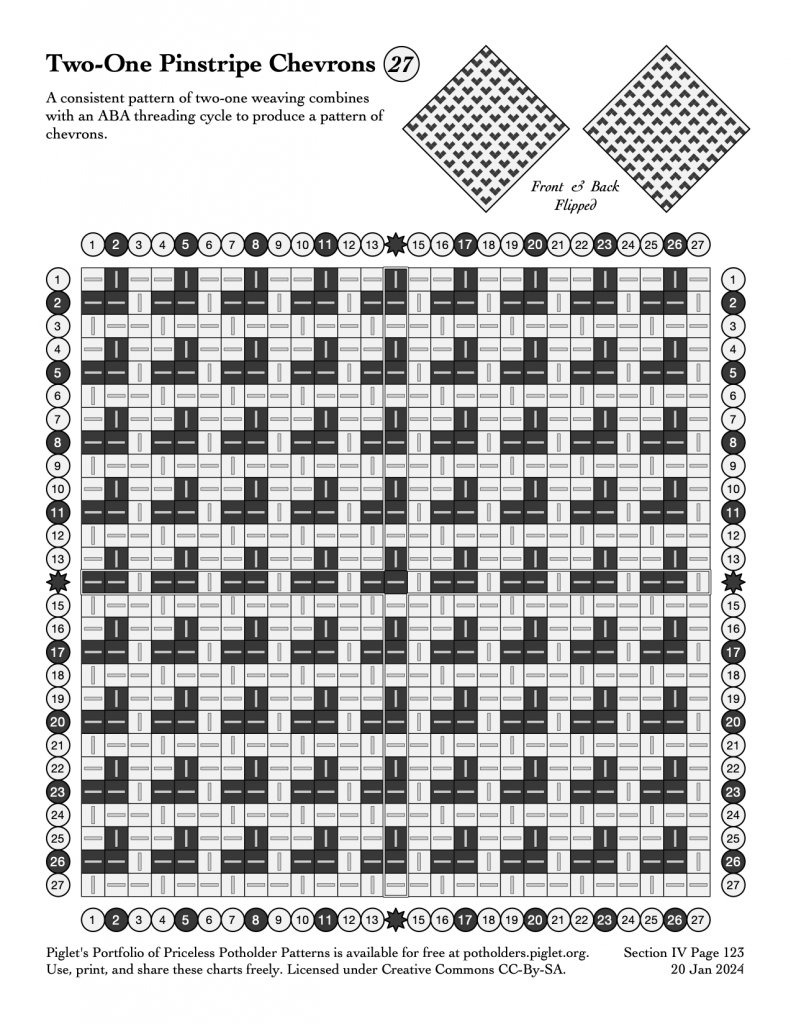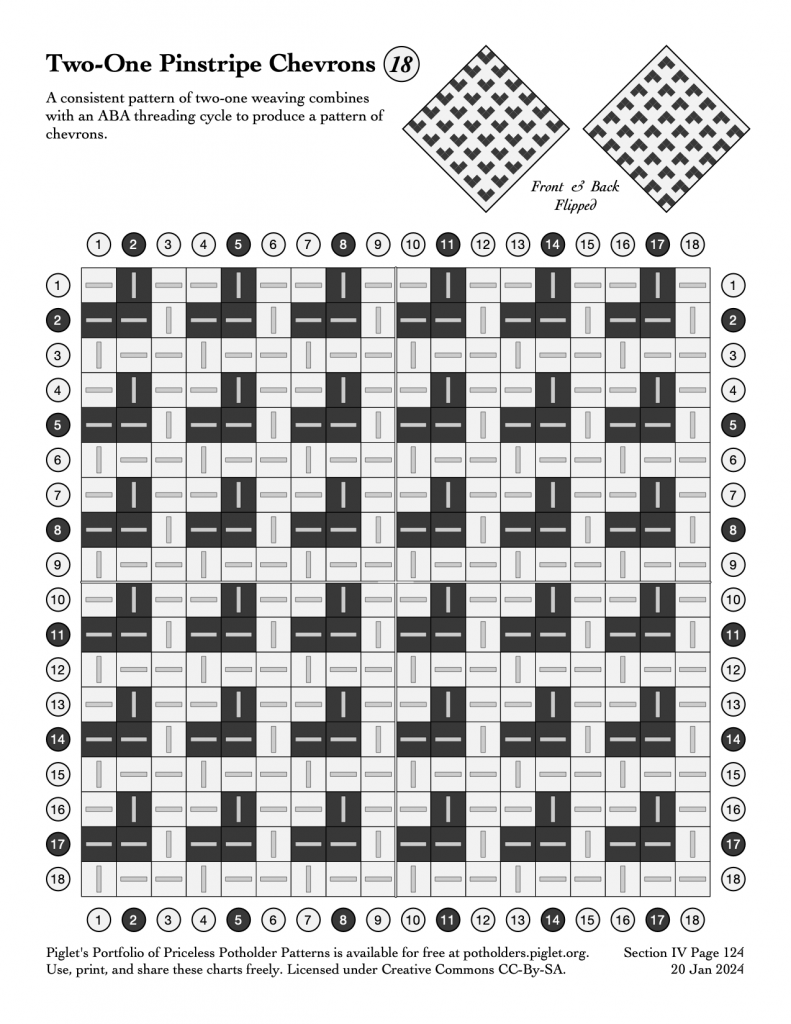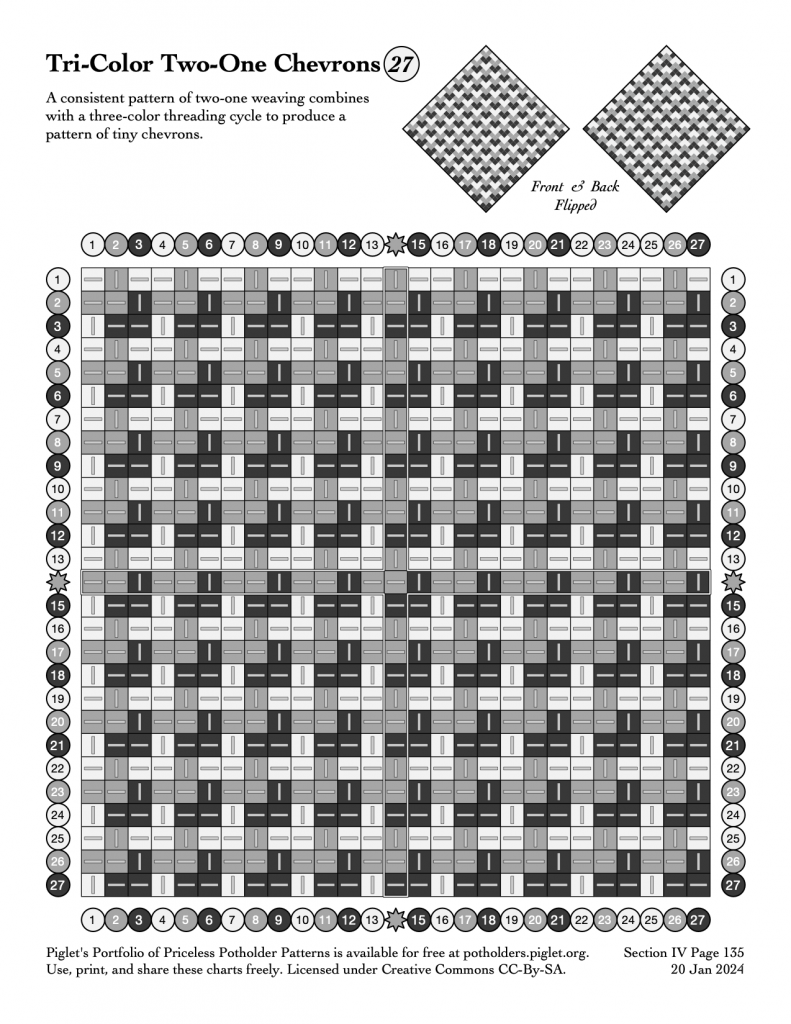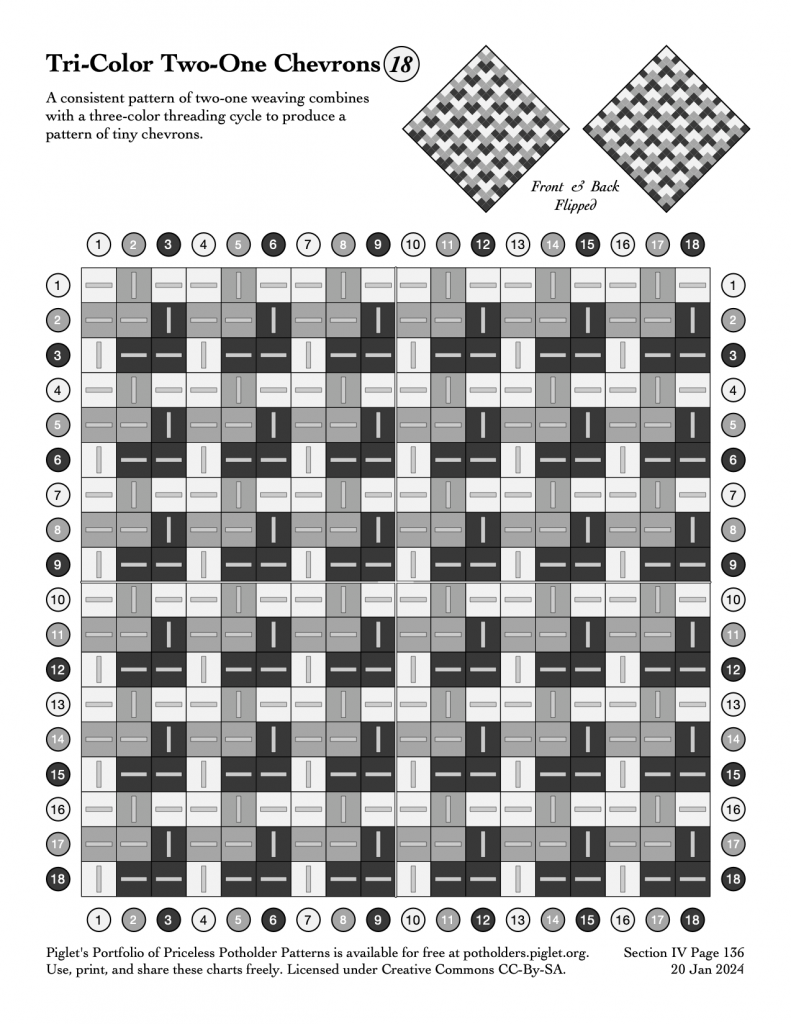I spent Saturday in Brooklyn as part of our local historical reenactment group, showing the public how we can draw inspiration from thousands of years of weaving history even when using very modern materials like our potholder loops and peg looms.
Alongside me were compatriots showing off their work with more historically-appropriate materials — dying, spinning, twining, braiding, weaving, sewing, embroidery and more.
So many people stopped by to see our work and learned about the many skills being exhibited, and I hope that a good number of them learned a thing or two, and maybe got inspired to pick up a new craft or dig their supplies out of the closet and give an old hobby another try.
A copy of the informational flier I put together for my exhibit is attached below.
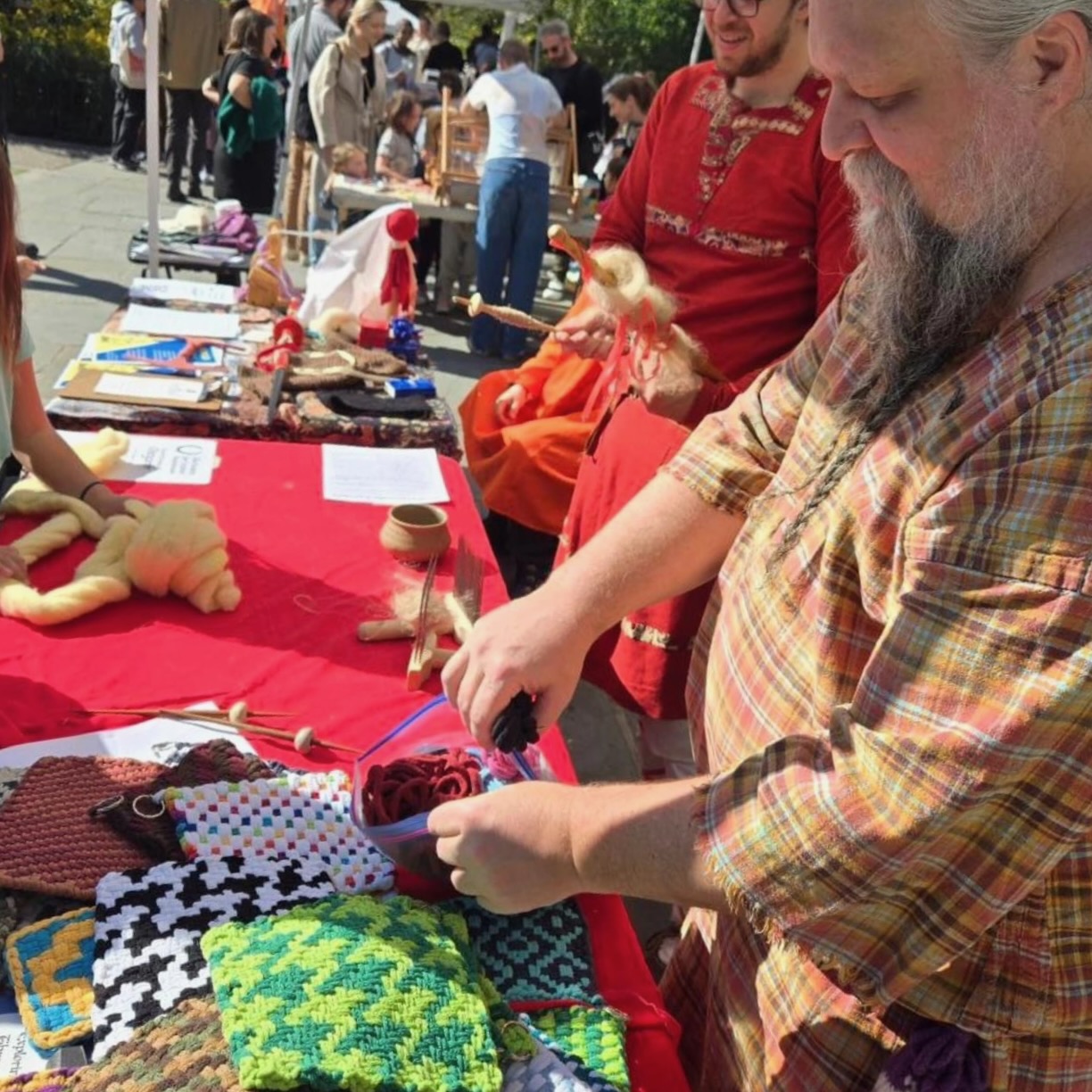
Exploring Medieval Weave Structures Through A 20th-Century Fiber Art
Presented By Mathghamhain Ua Ruadháin
(Known in modern times as Matthew Cavalletto)Nearly a hundred years ago, the thriftiness of the Great Depression led people to “up-cycle” the elastic trimmings from sock factories, using small metal peg looms to weave them together into bits of household fabric — often used for potholders.
Making colorful potholders out of stretchy loops remained a common craft project for kids through the subsequent decades, and in recent years there’s also been a new wave of interest from adults who are revisiting this nostalgic hobby.
The chunky nature of these fibers means the details of the weaving structure are magnified, making it easier to see how the over/under pattern of weaving and the choice of fibers and colors combine to form different styles and patterns of fabric.
As a hobbyist project, I’ve spent hours reading history articles and archaeology papers that analyzed scraps of fabric dug out of caves and bogs and battlefields that were originally woven hundreds or thousands of years ago — and then using them as inspiration for potholders that echo their structures: plain-weave, so many kinds of twills, basket-weaves, waffle-weaves, double-weaves, and more.
Working with my wife Piglet, we’ve combined those historical examples with designs from modern pattern books for home looms and industrial production, and mixed and matched elements to explore a wide variety of fabric possibilities.
Making things out of string is one of the key developments of human history — a shared legacy of our whole species, stretching back a thousand generations to the Paleolithic — and we can find a connection to that heritage today, even in this humble and unassuming medium that some might think of as child’s play.
Our free weaving charts and project photos are online at potholders.piglet.org.
